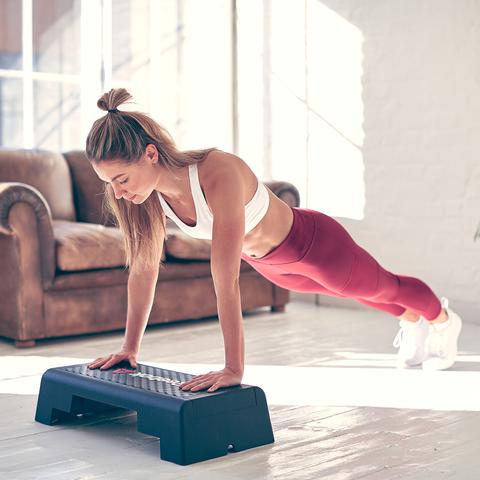Resistance training has grown in popularity over the years and has become essential to any exercise routine. So much so, government entities such as the 'Better Health Channel' have recommended resistance training as a significant step to Healthy Living and Keeping Active.
What Is Resistance Training?
Resistance Training is an umbrella term for any training that uses external and incremental resistance to cause muscles to contract. The external resistance can include traditional weights or more home-friendly resistance tools such as Power tubes, Resistance training bands, weighted accessories such as ankle/wrist weights or weighted vests, and of course, and probably the most ergonomic, your body weight. Resistance training should be progressive and target individual muscles, yet stimulate all other major muscle groups; legs, abdominals, back, shoulders, arms, and chest.

Resistance training works by breaking down the fibre of targeted muscles and then repairing them. Proteins, hormones, and other nutrients work to repair these broken-down muscles, ultimately improving and increasing the targeted muscles' size, strength, and endurance. This is why it is essential to allow for recovery time between workouts.
Resistance training can be picked up at any age. Resistance training improves muscle control and even slows down and impedes the decline of muscle fibres that naturally come with aging adults. On top of that, resistance training also has multiple health benefits. It has been proven to improve bone strength, decrease moderately-high blood pressure, and raise your metabolic rate, which is crucial to maintaining and reaching body-weight goals.
Body Resistance Training
Using your own body to counter your own weight creates a point of resistance; push-ups, sit-ups, chin-ups, squat thrusts, lunges, and step-ups are only a few of the resistance exercises you can do at home with minimal to no equipment. Obviously, you can't adjust your body's weight to increase or decrease resistance. Still, you can create different levels of resistance by positioning your body and using the environmental dips, inclines, and decline around you. For example, the angle your body produces in relation to the surface you are doing push-ups off of can significantly impact resistance levels. A wall push-up creates very little resistance, much less than that of a traditional floor push-up. As wall push-ups become more manageable, you can move from pushing off a wall to pushing off a step; the angle is now more horizontal, creating more resistance. Accordingly, resistance increases the closer your body gets to a horizontal position and is at its peak when doing traditional floor push-ups.

Another example of adjusting your body and using the environment around you to increase or decrease resistance can be demonstrated through pull-ups. When you first start doing pull-ups, you can start by standing on a chair, a step, or a bench; this will support some of your body weight, creating less resistance. As this pull-up style becomes increasingly manageable, remove the chair, step, or bench and move over to your traditional pull-ups.
If you have mastered conventional pull-ups and push-ups, but you've grown to love them, it doesn't have to stop there. By adding weight to your body, you can increase resistance. Ankle weights and weighted vests are perfect for this kind of resistance training. If you're on a budget, get creative, use anything that has weight to it; for example, you could potentially strap bags of sugar or flour to your legs. As long as there is a force pulling against you, resistance will always exist.
Looped Resistance Bands & Power Tubes
Looped Resistance Bands are a great way to do resistance training. They are small, lightweight, and portable. Resistance bands work the same way as other resistance training equipment such as free-weights; the only difference is that they don't rely on gravity. Free weights create resistance with their relationship to gravity; this is the same with pull-ups; for example, regarding pull-ups, resistance comes when you pull your weight away from the ground or gravitational pull. Resistance bands are elastic in design; as you try to stretch them, they create resistance in attempting to return to their original shape and form. Even in a starting position, holding the band in the correct place requires some resistance; this means you'll face constant resistance from the start to the finish of your training. Power tubes work in a similar way to Resistance bands. Power Tubes are elastic tubes with handles at each end and are almost like a mix between free weights and resistance bands. By adding weight to or securing the end of the power tubes, your muscles face resistance as you pull against the weight that anchors the power tubes down, giving you a similar effect to resistance bands.

It doesn't matter what resistance training you choose to do. Whether you decide to do push-ups, pull-ups, use resistance training bands, power tubes, or use weighted accessories, as long as you're using external and incremental resistance to cause your muscles to contract, you can expect improvements in strength, endurance, muscle control, bone strength, high blood pressure, and your metabolic rate; which all lead to a healthier you and healthier life.










